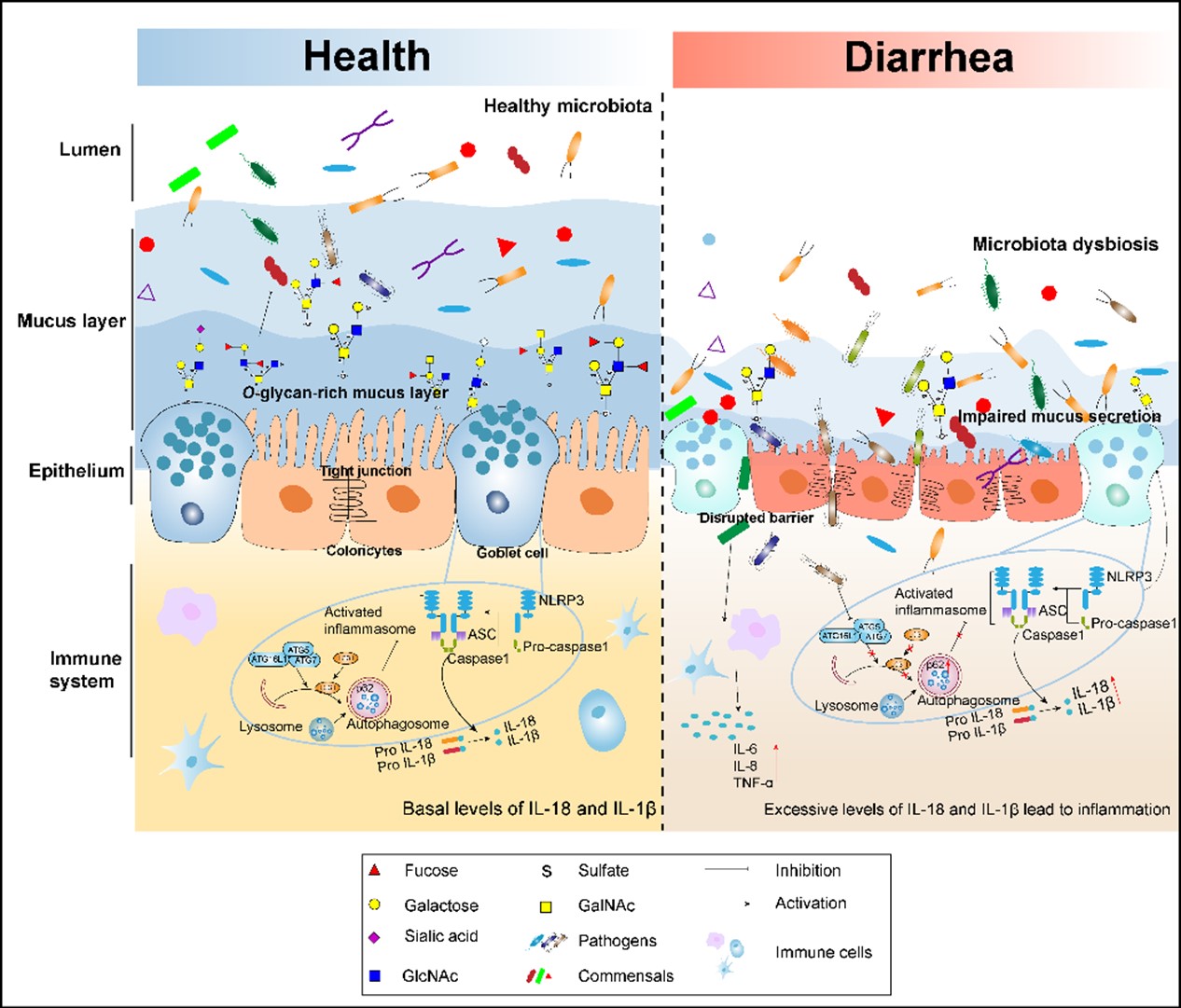
Recently, researchers from Animal Nutrition and Regulation Science and Technology Innovation Team of Institute of Animal Sciences of Chinese Academy of Agricultural Sciences (IAS-CAAS) have studied the mechanism of early weaning stress-induced diarrheal diseases based on the methods of glycomics, microbiome, and targeted metabolomics. The study found that in a weaned piglet model, diarrheal disease could lead to abnormal mucin O-glycan profile, intestinal flora imbalance, and impaired mucosal barrier function, which resulted in impaired intestinal microenvironment. Meanwhile, the mechanism of the interaction between O-glycans and microorganisms was systematically revealed. Relevant research results were published in the journal of Microbiome.
It was reported that diarrhea of weaned piglets was an important cause of piglet death, which caused serious economic losses, which was one of the major problems for the pig industry. The interaction between intestinal epithelial cells and microbiota could maintain intestinal homeostasis and control inflammation. However, a relative paucity of research has been focused on the host-derived regulatory network that controls mucin O-glycans and thereby changes gut microbiotas in diarrhea piglets.
The study found that the morphology of the colonic mucus layer of diarrhea piglets was damaged using UEA lectin and AB-PAS staining, the thickness of layer was significantly lower than that of healthy piglets, and the number of goblet cells was also significantly reduced. Meanwhile, the study established a method for the analysis of intestinal mucin O-glycans of piglet using liquid chromatography-mass spectrometry with porous graphitic carbon column, and 57 kinds of O-glycan structures in pig colon were identified by this method. The length of O-glycan chains in the intestinal tract of piglets with diarrhea was shortened, and the abundance of acidic glycans with the function of resisting the adhesion of pathogens was significantly reduced. In vitro studies further found that mucin O-glycan could bind E. coli as a signaling molecule to protect the epithelium from inflammatory damage, and it could serve as an energy source for symbiotic microorganisms to form a mutually beneficial symbiotic relationship with microorganisms.
These results elucidated the mechanism of interaction between intestinal O-glycans and microorganisms, and further revealed the mechanism of intestinal barrier function, and provided a new basic theoretical basis for preventing and relieving piglet diarrhea. Meanwhile, this study could help to analyze the mechanism of human infant diarrhea and provide new strategies for the development of new effective treatments.
This study was funded by the National Agricultural Science and Technology Innovation Program. Bing Xia and Ruqing Zhong are the co-first authors of the paper, and Professor Xin Zhao and Professor Hongfu Zhang are the co-corresponding authors.

Figure Enzymes can affect the gut microbiota in three ways. GOx: glucose oxidase; H2O2: hydrogen peroxide; IAP: intestinal alkaline peroxidase; DspB: dispersin B.
The article link: https://doi.org/10.1186/s40168-022-01326-8
(News supplied by Jiaheng Li, Fuli Deng, and Bing Xia in the Institute of Animal Science of Chinese Academy of Agricultural Sciences (IAS-CAAS), Beijing, China)

